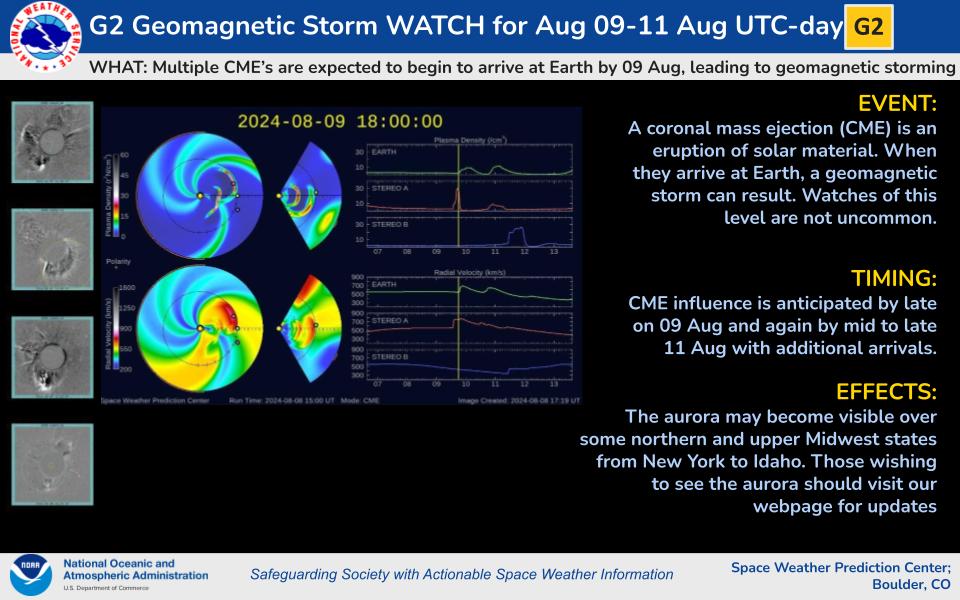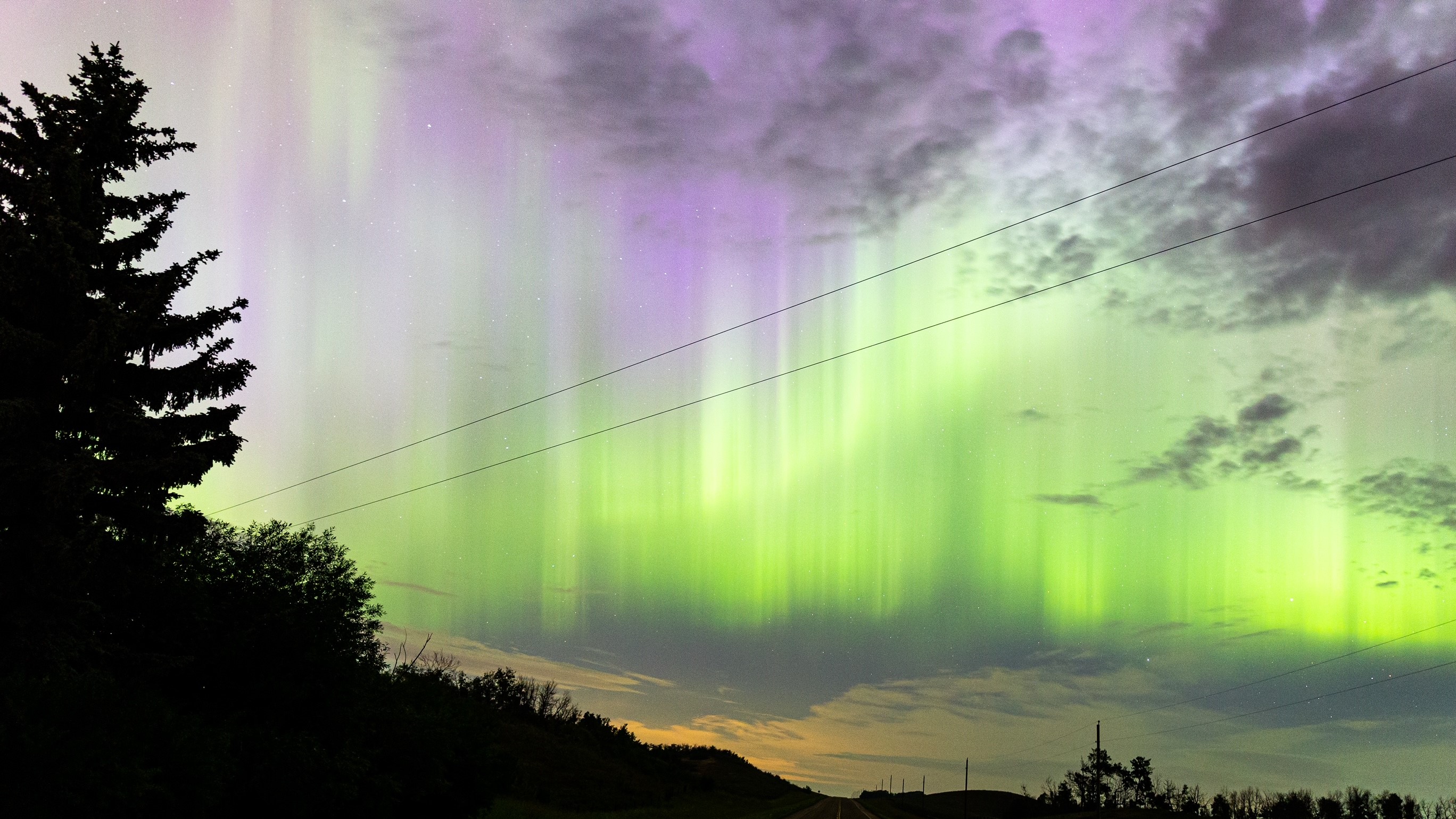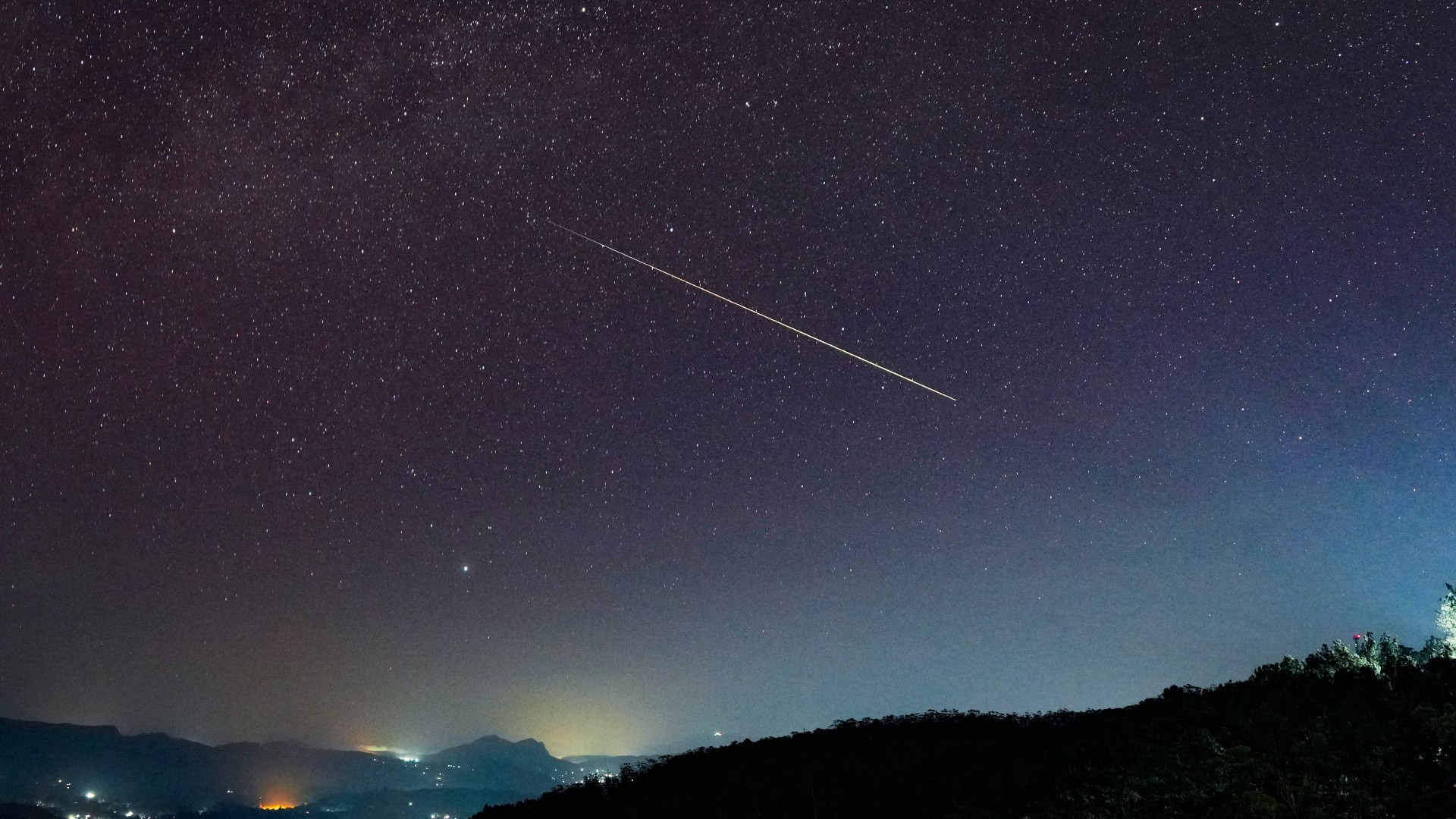Aurora alert: Possible geomagnetic storm could see northern lights alongside Perseid meteor shower this weekend
Northern lights could be visible over some northern and upper Midwest states this weekend.
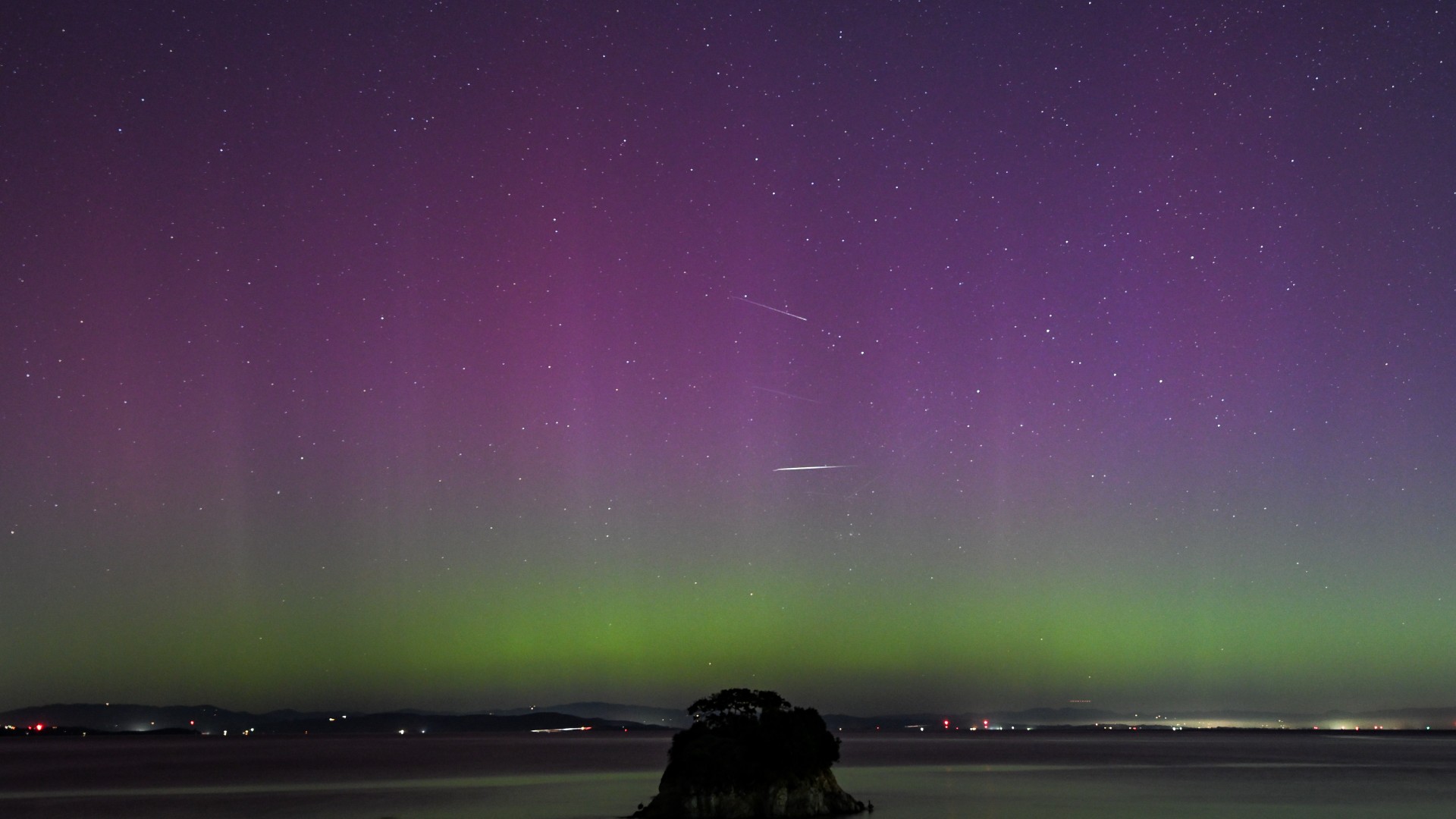
What's better than one dazzling night sky phenomenon? Two of course!
Lucky stargazers this weekend might be in for a real treat as heightened solar activity has prompted the National Oceanic and Atmospheric Administration (NOAA) Space Weather Prediction Center to issue a geomagnetic storm watch for Aug. 9 through Aug. 11, coinciding more or less with the peak of the Perseid meteor shower (around Aug. 11 and before dawn on Aug. 12.)
Related: How to watch the Perseid meteor shower live online this weekend
If the predicted moderate G2 conditions are met, auroras might be visible as low as New York and Idaho, according to NOAA. Though geomagnetic storm warnings of this level are not uncommon, they are enough to trigger some impressive northern lights displays.
For example, a recent G1 storm — weaker than a G2 storm — still managed to spark magnificent auroras across the U.S. and Canada. Even if geomagnetic storm conditions are not reached, a strong enough solar substorm can also create impressive auroras.
Geomagnetic storms are classified by NOAA using a G-scale to measure the intensity of geomagnetic storms. They range from G5, the most extreme class to G1 minor class storms. The recent geomagnetic storm watch issued by NOAA is currently classified as a G2-class.
The culprits behind the issuance of the recent storm watch are three plumes of plasma and magnetic field known as coronal mass ejections (CMEs). Two CMEs erupted from the sun on Aug. 7 and one more launched during yesterday's (Aug. 8) X-class solar flare, all three are now barreling toward Earth. The CMEs are predicted to arrive late on Aug. 9 and again by mid to late Aug. 11, according to NOAA Space Weather Prediction Center's forecast discussion.
Breaking space news, the latest updates on rocket launches, skywatching events and more!
However, it should be noted that predicting the exact time of the CMEs' arrival is incredibly difficult as space weather, like weather on Earth, is a fickle creature and challenging to forecast.
Keep in mind that even if a CME hits Earth, the impact on auroras depends on the magnetic field alignment within the CME. If the alignment allows it to connect with Earth's magnetosphere, it could result in spectacular northern lights displays. However, if Earth's magnetosphere "closes the door" on the CME, aurora chasers might be left disappointed.
When checking space weather data from resources like Space Weather Live, pay close attention to the Interplanetary Magnetic Field (IMF), especially the Bz value, which indicates the north-south direction of the IMF. For a strong connection to Earth's northward-pointing magnetosphere, the Bz needs to be oriented southward, according to Space Weather Live.
Should we experience favorable geomagnetic conditions, the incoming CME could trigger impressive mid-latitude auroras. CMEs carry electrically charged atoms called ions. When CMEs collide with Earth's magnetosphere, they can trigger geomagnetic storms. During these storms, the ions interact with gases in Earth's atmosphere, releasing energy as light. This phenomenon is known as the northern lights, or aurora borealis, in the Northern Hemisphere, and the southern lights, or aurora australis, in the Southern Hemisphere.
To keep up to date with the latest space weather alerts and forecast check out NOAA's Space Weather Prediction Center. I also recommend checking out space weather physicist Tamitha Skov's account on X and YouTube channel for detailed space weather reports and valuable aurora hunting information.
Editor's note: If you capture a stunning photo or video of the northern lights (or southern lights!) and/or the Perseid meteor shower and want to share them with Space.com for a possible story, send images, comments on the view and your location, as well as use permissions to spacephotos@space.com.
This story was updated at 4 a.m. EDT (0800 GMT) to add Aug. 11 to the geomagnetic storm watch and update the NOAA SPWC graphic showing details of the G2 geomagnetic storm watch for Aug. 9 - Aug. 11 and include details of a third CME on the way. Originally the storm watch was only issued for Aug. 9 and Aug. 10.
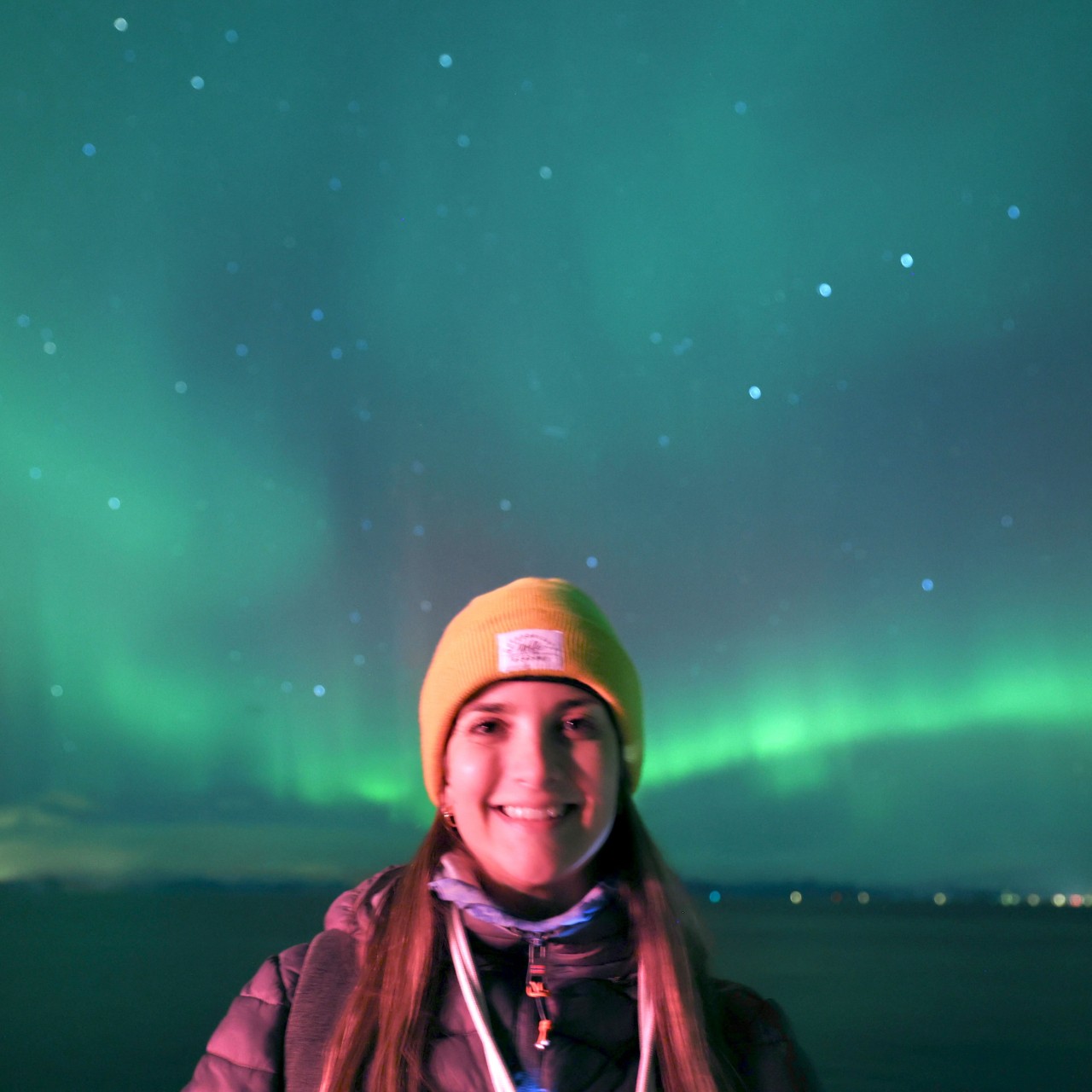
Daisy Dobrijevic joined Space.com in February 2022 having previously worked for our sister publication All About Space magazine as a staff writer. Before joining us, Daisy completed an editorial internship with the BBC Sky at Night Magazine and worked at the National Space Centre in Leicester, U.K., where she enjoyed communicating space science to the public. In 2021, Daisy completed a PhD in plant physiology and also holds a Master's in Environmental Science, she is currently based in Nottingham, U.K. Daisy is passionate about all things space, with a penchant for solar activity and space weather. She has a strong interest in astrotourism and loves nothing more than a good northern lights chase!
